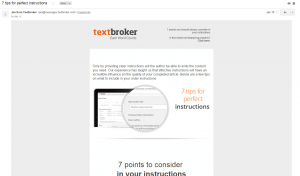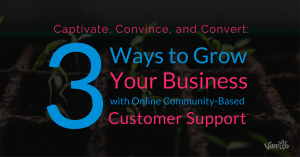More often that not, we have appointments with potential clients who are having trouble getting any traction with their website. They come to us with this look of desperation and exhaustion, wondering why, oh why, isn’t our site working after all the time and effort we put into it?!?!
Of course, this leads us to ask them about their analytics. To our surprise, many times, these potential clients either don’t use analytics, or even worse, don’t know what they are. That literally floors us when we hear that one. If you’re not reviewing your analytics, how are you supposed to know what is and what isn’t working? So for those who don’t use analytics or aren’t sure where to start, let us give you a quick rundown of a good starting point.
Learn The Terminology
Before you even get set up, you have to learn the terminology. You’re going to see words like bounce rate, new sessions, campaigns, acquisitions, behavior, etc. If you don’t know what these mean, you won’t know what you’re looking at. So become acquainted with the terminology. Thanks to the magical world of the internet, you can find the meaning of these words pretty quickly.
Home Sweet Home
There’s no place like home, and when it comes to Google Analytics, your home is your dashboard. Your dashboard provides you with a brief overview of some of the key points on analytics. It allows you create a customized view of your data and it’s a great way of getting a quick look of how things are working without having to navigate through the many reports. This should always be your starting point.
Another great thing about your dashboard is you can set shortcuts. So if there are pages or reports that you visit frequently, click on the shortcut link above it and you will have quick and easy access to it.
What Should You Be Looking At?
At first, Google Analytics can be a little overwhelming. There’s enough numbers, bars, and graphs to fill an entire year of high school geometry. But don’t let that scare you away. You don’t have to look at every little statistic to understand what’s working and what isn’t. Here’s three things you should certainly focus on to begin.
- Traffic: The traffic to your site is the fuel in the car. It’s what makes everything work and flow. If you don’t have traffic, your site is basically useless. So focus on your visitors. You can then determine how many people are coming to your site, but also how long they are spending on your site, what pages are they bouncing from, etc. By understanding your traffic, you will instantly see where changes are necessary.
- Sources And Landing Pages: As traffic begins flowing to your site, it’s time to figure out where it’s going and where it’s coming from. Take a look at the landing pages to determine if people are coming to them and if your traffic is converting on them. If your landing pages have a high bounce rate and low conversion rate, you know it’s time for some changes on those pages. Also, be sure to figure out where your traffic is coming from, whether it’s search engines, blog posts, social media, etc. Once you figure out where your traffic is coming from, it’s time to optimize on those specific channels.
- Look At Your Funnel: Understanding the entire process, from where people come from to a conversion is important. Take a look at the overall picture. Do you have leaks in your funnel where traffic is falling out? Focus on those pages where people are bouncing from your site and determine what is pushing them out of your funnel. Maybe it’s simple as a broken link or a bad call-to-action. If you can do this, your site should hit its ultimate goal: turning a lead into a conversion.
It Should Never End
This is a good start if you’re just getting started with Google Analytics. As I mentioned before, it can look a little overwhelming at first when you see all the numbers and charts, but once you narrow it down to what you want to look at to make corrections on your site, it really is a simple process. And of course, don’t stop measuring. Just because you made some changes that led to better traffic and conversions doesn’t mean your site is a finished product. There will always be room for improvements as the digital world continues to change and evolve.
(166)




